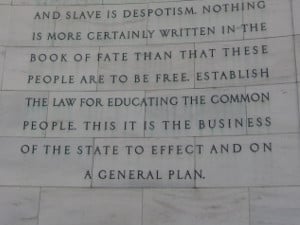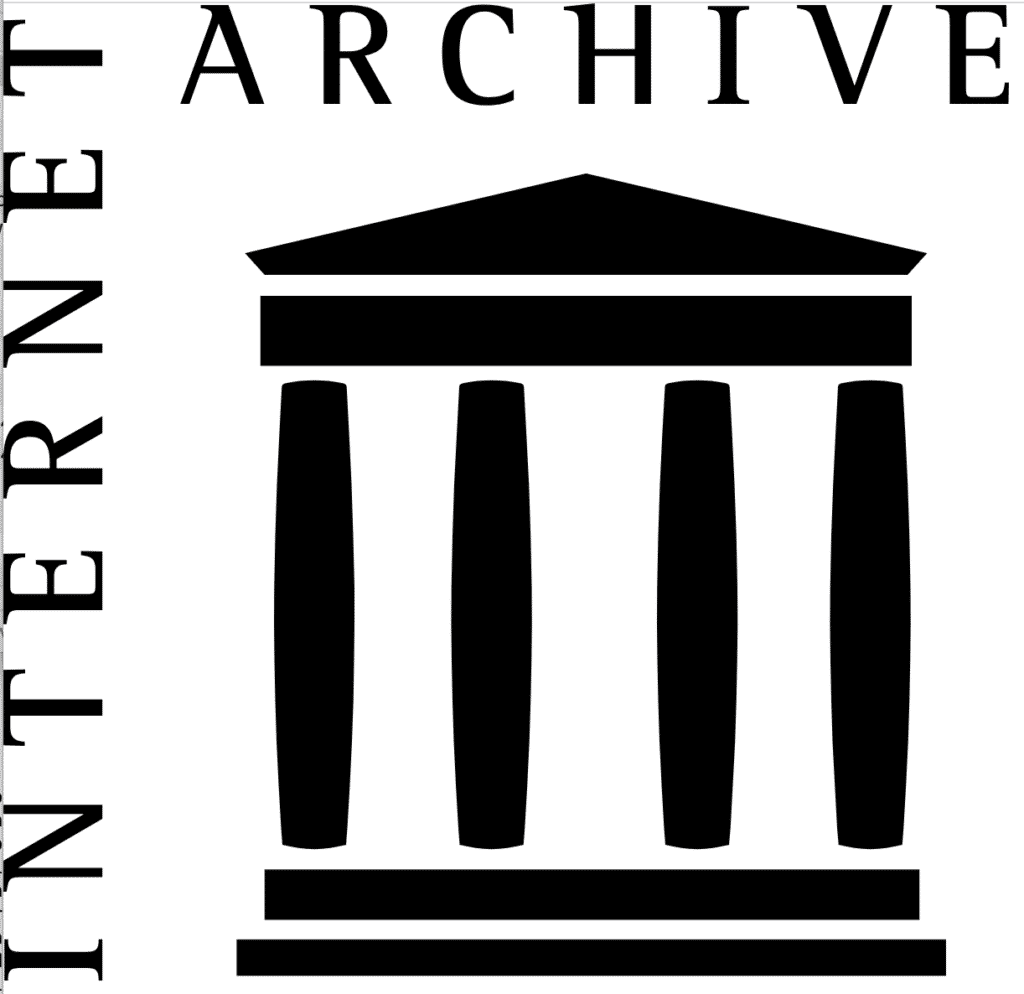Hello Dr. Giles,
I’ve developed an app for creating contextual citations for the web and, given your work with CiteSeer, I’m interested in gauging whether there would be interest within academia for my project.
What are Contextual Citations?
Contextual citations, as I’ve implemented them, allow authors to demonstrate the context of their citations by expanding the 500 characters of the context surrounding a quote. (See Demo below)
Writers can create contextual citations by marking up their citations using a “cite” attribute and calling a web service that looks up their citation and extracts the surrounding context into a JSON file.
<blockquote cite=“http://avalon.law.yale.edu/19th_century/jeffauto.asp”>
Nothing is more certainly written in the book of fate than that these people are to be free.
</blockquote>
Readers’s browsers then retrieve the surrounding JSON data and display it when the user clicks on the blue arrows above and below a quote, or for shorter inline quotes, clicking on a styled link to view a popup.
Demo: Two examples of contextual citations:
1. Blockquote: longer quotes

Jefferson Memorial
The Jefferson Memorial quotes Thomas Jefferson’s autobiography:
Nothing is more certainly written in the book of fate than that these people are to be free.
But if you click the blue down arrow and read the next few lines, you can quickly see that Jefferson’s original meaning was distorted by the removal of the quote’s context.
2. Inline quotation: shorter quotes
But catching cherry-picked citations isn’t the only advantage of being able to preview the surrounding context. Often the context provides the reader with a fuller understanding of the meaning. Take the following quote about “Well-behaved Women ..”.
Harvard Professor Laurel Thatcher Ulrich‘s recently popularized quip that “Well-behaved women seldom make history
” appears on T-shirts, but do you know the original context? (click the above link)
Additional Examples:
To personalize things, I decided to cite one of your publications on the subject of RefSeer:
RefSeer:
Here’s is an example of a citation describing RefSeer:
a citation recommendation system which automatically suggests candidate citations based on input queries. RefSeer has applications for both researchers and reviewers. While authoring a paper, researchers can use our citation recommendation system to find prior works related to the problem they seek to investigate. In turn, reviewers can use RefSeer to check whether a paper cites all relevant papers
When I published this blog post, it looked up the PDF for your publication and extracted the 500 characters of surrounding text into a JSON file that my web service saved to a CDN.
I have also created a WordPress demo that you can use to test-drive what a web application that implements contextual citation is like in real practice.
(more: Test-drive WordPress Demo with video)
How Contextual Citations Work:
- When an author publishes a citation (in Html), they add a “cite” attribute to their citation tag: <blockquote cite=”cited-url”>quote</blockquote>
- The author or CMS system makes a call to the api.citeit.net web service when the publication takes place.
- The web service receives the URL of the citing publication and retrieves a copy, looking for any blockquote or q tags that contain a cite attribute with a valid URL.
- The web service retrieves each cited document and validates whether the quote matches the source.
- If the quote matches, it extracts the 500 characters of the surrounding context and saves it to a JSON file, which is then saved to a CDN or public webserver.
- The reader’s browser uses javascript to look up this JSON file when browsing the citing document.
- If the reader clicks on the arrows or text link, the javascript renders the JSON file that it got from the web service and displays it to the user in a div above the quote or in a popup.
(more: Developer Information with video)
Questions for Dr. Giles:
- Do you think contextual citations would be valued by academics?
- Many academic papers are published in PDF. Do you think a contextual citation system needs to be able to display an expanding/popup user interface from within PDF to be useful, or would the ability to cite PDFs from within Html be enough?
- How significant of a barrier do you think access restrictions (logins) are to the implementation of contextual citations in academia?
- Do you have any colleagues or students who might be interested in learning more about CiteIt.net’s Contextual Citation?

James Burke (Historian) “Connections” Television Program
Citing YouTube transcripts:
Although I haven’t heard of academic publications citing video transcripts, the App supports the citatation of YouTube video transcripts.
As an example, consider the following quote from James Burke‘s “Connections” series about a “crafty way” the Library of Alexandria assembled their collection:
Now they came out like this in the form of scrolls now they got these scrolls either because the local scholars wrote them or because they had a rather crafty law you see if you came to alexandria on a boat and you owned a book you had to lend it to the library to be copied and sometimes the copies were so good the owners went off with the fakes and the library kept the original.
About me:
I was born in Winnipeg Manitoba but grew up in Lancaster County, Pennsylvania. I majored in history at the University of Waterloo in Ontario, Canada. I took some electives in computer science while I was there. After I graduated in 2001, I got a job as a computer programmer and I’ve worked as a programmer ever since.
The CiteIt.net app arose out of an interest in writing a review of hypertext pioneer Ted Nelson that was more in the spirit for his original vision for hypertext. I started this Citation project in 2015 with the goal of writing an HTML-based review of Nelson’s Ph.D that featured citations which pulled quote context from the original.
Long-term Goals:
If everything works according to plan, I’d like to pursue this full-time for an organization like Substack or the Internet Archive.
If you have any suggestions for how I should proceed, sent me an email.



